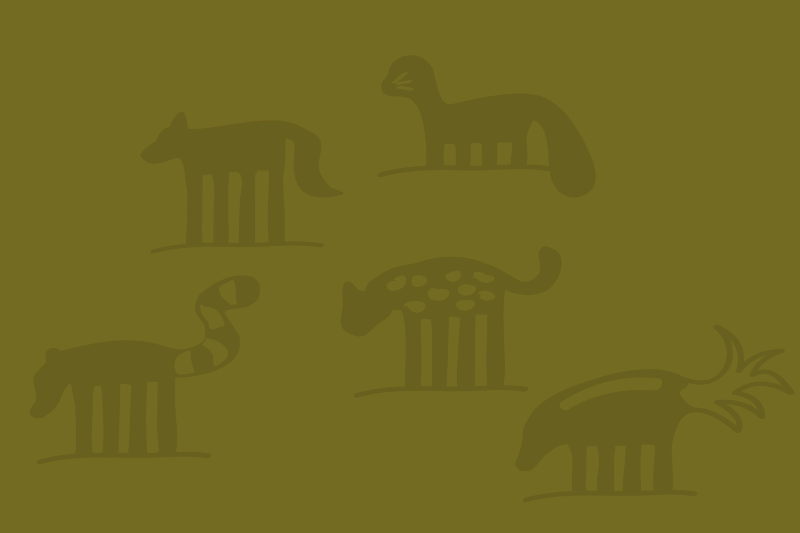Koepfli, K. P., Jenks, S. M., Eizirik, E., Zahirpour, T., Valkenburgh, B. Van, & Wayne, R. K. (2006). Molecular systematics of the Hyaenidae: Relationships of a relictual lineage resolved by a molecular supermatrix. Molecular Phylogenetics and Evolution, 38(3), 603–620.
The four extant species of hyenas (Hyaenidae; Carnivora) form a morphologically and ecologically heterogeneous group of feliform carnivorans that are remnants of a formerly diverse group of mammalian predators. They include the aardwolf (Proteles cristatus), a termite-feeding specialist, and three species with a craniodental morphology adapted to cracking the bones of prey and/or carcasses, the spotted hyena (Crocuta crocuta), brown hyena (Parahyaena brunnea), and striped hyena (Hyaena hyaena). Hyenas have been the subject of a number of systematic studies during the last two centuries, due in large part to the extensive fossil record of the group, with nearly 70 described fossil species. Morphological studies incorporating both fossil and living taxa have yielded different conclusions regarding the evolutionary relationships among living hyenas. We used a molecular supermatrix comprised of seven nuclear gene segments and the complete mitochondrial cytochrome b gene to evaluate phylogenetic relationships among the four extant hyaenid species. We also obtained sequence data from representative species of all the main families of the Feliformia (Felidae, Herpestidae, and Viverridae) to estimate the sister group of the Hyaenidae. Maximum parsimony and maximum likelihood analyses of the supermatrix recovered identical topologies. Furthermore, Bayesian phylogenetic analyses of the supermatrix, with among-site rate variation among data partitions parameterized in three different ways, also yielded the same topology. For each phylogeny reconstruction method, all but two nodes received 100% bootstrap or 1.00 posterior probability nodal support. Within the monophyletic Hyaenidae, Parahyaena and Hyaena were joined together, with Crocuta as the sister to this clade, and Proteles forming the most basal lineage. A clade containing two species of mongoose (core Herpestidae) plus Cryptoprocta ferox (currently classified in Viverridae) was resolved as the sister group of Hyaenidae. The pattern of relationships among the three bone-cracking hyaenids (Crocuta, Hyaena, and Parahyaena) is incongruent with recent cladistic assessments based on morphology and suggests the need to reevaluate some of the morphological characters that have been traditionally used to evaluate relationships among hyenas. Divergence time estimates based on a Bayesian relaxed molecular clock indicates that hyaenids diverged from their feliform sister group 29.2 MYA, in the Middle Oligocene. Molecular clock estimates also suggest that the origin of the aardwolf is much more recent (10.6 MYA) than that implied by a cladistic analysis of morphology (∼ 20 MYA) and suggests that the aardwolf is possibly derived from a bone and meat eating lineage of hyaenids that were present in the Late Miocene. [Hyaenidae; phylogeny; cytochrome b; nuclear gene segments; Proteles; Crocuta; Hyaena; Parahyaena.] © 2005 Elsevier Inc. All rights reserved.
